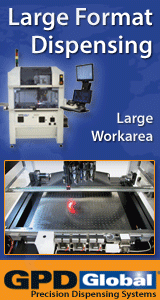Some additional comments from a paper may be of interest.
Baking Printed Circuit Boards - Why and How
Baking printed boards prior to conventional and surface mount assembly should not be necessary. Often boards are baked for historical reasons; in the past a problem was solved with adding a baking step and it became a part of the manufacturing process. Baking is also conducted based on customer demands; due to the cost and technology level of the product baking can eliminate the possibility of delamination on marginal circuits boards.
Today, due to the high quality of circuit manufacture, improved surface preparation and increased epoxy to laminate adhesion, baking should not be necessary.
So let's now ask some questions
Why do we bake printed boards?
What benefits does it give us?
What temperature is required and for what period?
What are the disadvantages of baking?
The two main reasons for baking circuit boards is to eliminate outgassing of moisture through the copper plating in plated through holes. This occurs during manual or automated soldering processes causing pin holes, blow holes or sunken solder fillets.
Fig1. The example shows a blow hole formed in a solder joint caused by gas escaping through the plated through hole and continues during the solidification of the solder.
The other reason for baking boards is to prevent delamination or measeling of boards during soldering or rework. This can occur when moisture accumulates in voids or at the interface between the epoxy/laminate on poorly bonded multi-layer boards. The interface between the glass cloth and the epoxy can be broken during drilling or other mechanical operations. During soldering the moisture turns to steam/water vapour and expands. The pressure can cause any questionable product to fail. With the quality of the surface preparation or copper layers adhesion should not be an issue today. There are of course some board material combinations that do not have the same adhesion.
Fig2. The example above shows delamination in the circuit board assembly just like a blister bubble.
All printed circuit boards contain moisture, depending on the laminate material type; polyimide rigid and flexible circuits can contain much more than standard glass epoxy materials.
Boards can be baked to remove the moisture, this will require a minimum of 100-110oC to allow the moisture to evaporate. Temperatures below this figure are of little value. The time for baking simply relates to the time for the boards to reach the required temperature and then the time for the moisture to be removed. The simplest way of determining this is by weight gain and weight loss measurements.
Often the reason that boards are not baked successfully is the circuit boards are stacked and the heat never gets into the middle of the stack. If boards are to be baked it is a process like any other, so check the parameters. Take a thermocouple and measure the temperature of the oven and selected board positions. Boards in a stack will probably never get to the desired temperature and often damage to the surface of the board will occur.
Ideally the oven should not be used for other processes, certainly not curing and baking operations on volatile materials. Adhesives, conformal coatings and potting compounds heated or cured in an oven produce vapours. It is possible for these to affect the solderability of pads, this is over and above the effects of surface oxide formation due to heating. If you feel this is being over concerned try checking the extraction and see how much contamination can be scraped off the piping.
If you are going to introduce a baking step in your manufacturing process determine the minimum time required to eliminate as much moisture as possible. There is no added value to excessive bake times. First take a number of boards and obtain the exact weight of each board to get an average weight.
Bake the boards and then reweigh each board to determine when there is no more change to the weight. You will need to use a set of digital scales. When you have established the baking cycle allow the boards to stand in the normal production area and weigh the boards every hour to see how the moisture is re-absorbed. This will indicate the time boards can be left in the open, take a note for reference of the relative humidity in the production area.
There are some board materials which do benefit from a baking process, even if solderability is affected. Polyimide, be it flexible or ridged, boards are prone to a high expansion rate during soldering; however, some materials have improved to a point where this is not necessary.
As an engineer you do have to consider the baking process is rarely necessary to aid your process.
Let's consider a couple of different situations in manufacture:
Company producing multilayer circuit boards for a telecommunications application. 500-1000 board assemblies are being assembled per day. If there was a problem with one or two board assemblies delaminating per week and the occasional batch exhibiting outgassing it would be difficult to bake this quantity of boards. With this volume the company would also be in a strong position to make sure the PCB supplier sorted out his process. A couple of delaminated products would also be fairly inexpensive to replace.
A company who is producing only tens of complex boards per month to the military or aerospace industry would find it difficult to get improvements in the fabrication process. They would probably take the path of least resistance and bake the boards. The added cost of baking would be insignificant in the total cost. Having potential problems of delamination would not be accepted due to the high cost of the product and the long turnround times for replacement products regardless. It is possible to repair delaminated boards, it is not difficult but it is most unlikely that a company in the military market would accept this solution.
There are no easy ways to determine if a board requires baking to avoid delamination. There is a simple non destructive test to see if a board is liable to outgas from the plated through holes. Take a sample board and place some clear high temperature oil in selected holes. Place a soldering iron tip on the edge of the pad or a track to the pad. At soldering temperatures a good quality circuit board will show no evidence of gassing from the holes. This is evident if no bubbles are visible coming through the oil. Thin plating or breaks in the copper barrel will exhibit a stream of bubbles. The same test can be used as a reference to bake, after baking, no bubbles, why bake?
Fig3. Outgassing from via holes can be a major issue if it occurs on side two of a double sided surface mount board, printing paste on side one can be a major problem.
The same test method may be applied to via holes when they are to be used for test points. It is common for the vias to require filling during wave soldering to aid test pin contact. If they outgass you may see evidence of solder balls on the vias. If the solder levelling process is used to fill the vias they can outgass during reflow soldering. If this occurs during the first side assembly, solder balls can again be visible on the vias on side two of the PCB. The result is disaster during stencil printing, the balls lift the stencil off the surface of the PCB.
Only bake boards when rarely necessary and review the need periodically to avoid the unnecessary process stage. Often when you start to bake, it becomes the norm and in a couple of years everyone forgets why they started. Baking can have a marked effect on the solderability of the PCB so avoid it, it make sense.
reply »
![]() I know, I know. It's not a "solution", per se, because it's ...
- Oct 01, 2002
by
Steve Thomas
I know, I know. It's not a "solution", per se, because it's ...
- Oct 01, 2002
by
Steve Thomas
![]()
![]()
![]() Hey Steve,
You shouldn't bake your boards, because it's ...
- Oct 01, 2002
by
davef
Hey Steve,
You shouldn't bake your boards, because it's ...
- Oct 01, 2002
by
davef
![]()
![]()
![]() Yeah, like I haven't been hearing that for the last two mont...
- Oct 02, 2002
by
Steve Thomas
Yeah, like I haven't been hearing that for the last two mont...
- Oct 02, 2002
by
Steve Thomas
![]()
![]()
![]() There are some excellent exhumation structures of high press...
- Oct 02, 2002
by
davef
There are some excellent exhumation structures of high press...
- Oct 02, 2002
by
davef
![]()
![]()
![]() Dave, you have a good memory as well as an unhuman mastery o...
- Oct 02, 2002
by
Steve Thomas
Dave, you have a good memory as well as an unhuman mastery o...
- Oct 02, 2002
by
Steve Thomas
![]()
![]()
![]() We�ve been stewing on this and it just dawned on us the part...
- Oct 02, 2002
by
davef
We�ve been stewing on this and it just dawned on us the part...
- Oct 02, 2002
by
davef
![]()
![]()
![]() I'm looking for a turtle ~5" in diameter with no fussy linea...
- Oct 02, 2002
by
davef
I'm looking for a turtle ~5" in diameter with no fussy linea...
- Oct 02, 2002
by
davef
![]()
![]()
![]() Some additional comments from a paper may be of interest.
...
- Oct 04, 2002
by
Some additional comments from a paper may be of interest.
...
- Oct 04, 2002
by







